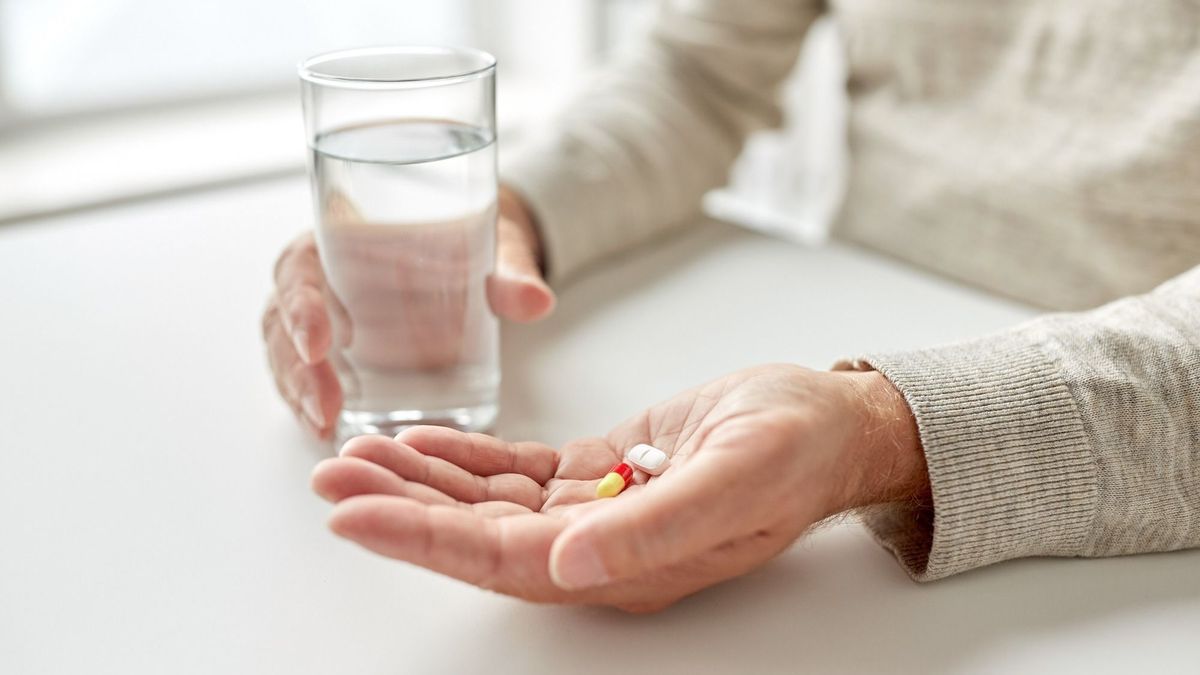
Vasodilators include several classes of drugs. They aim to dilate blood vessels and are prescribed for various indications. In which situations are they recommended? What are their side effects? Are there any contraindications? Explanations from Laurent Allard, pharmacist.
Especially prescribed to reduce high blood pressure, vasodilator drugs include several classes of drugs. These treatments have some side effects and should be subject to medical supervision.
Commonly prescribed, vasodilator drugs include different classes of drugs that will act on the vascular and venous system. “A vasodilator drug will participate in vasodilation, that is to say the relaxation of the smooth muscles which are constitutive of the wall of the vessels and will maintain an open and dilated diameter when this is tightened”. emphasizes Laurent Allard, pharmacist.
Vasodilator drugs: a wide range of prescriptions
Vasodilator drugs are prescribed to treat different pathologies. As they lower blood pressure, the main reason for prescribing these drugs remains mainly high blood pressure. A quick reminder: blood pressure corresponds to the pressure exerted on the walls of the arteries during blood circulation.
These tablets are also frequently prescribed in the event of angina pectoris (angina), in the emergency treatment of a heart attack, as an anti-migraine or even in the problems of arteritis of the lower limbs.
Additionally, they may also be prescribed to treat erectile dysfunction and certain urological disorders. “More generally, they intervene in the management of arterial disorders, venous disorders and everything that makes the junction between the two, namely the capillary vessels”. continues the pharmacist.
Three major classes of vasodilator drugs
Vasodilating drugs include different pharmacological classes. A distinction is generally made between predominantly venous vasodilators and predominantly arterial vasodilators. Finally, there is a third class of drugs: mixed vasodilators which act on both sites. Discover the different molecules and their health action:
Predominantly venous vasodilating drugs
They contain nitrates (trinitrine, for example) as well as sydonimines. Both of these drug classes are nitric oxide (No) donors. They are notably prescribed in the treatment of angina pectoris, arterial hypertension or other cardiac pathologies.
Predominantly arterial vasodilator drugs
They include calcium antagonists (by slowing the entry of calcium into muscle cells), alpha blockers or alpha-adrenolytics (which oppose the constricting effects of adrenaline and noradrenaline) as well as central antihypertensives.
Mixed vasodilator drugs
They include ACE inhibitors, for example, as well as angiotensin 2 receptor antagonists.
Contraindications and side effects of vasodilator drugs
Respiratory (asthma) and pulmonary pathologies constitute the main contraindication for vasodilator drugs, the latter inducing a bronchoconstriction effect. “In addition, the presence of liver disease may also represent another contraindication.“, points out Laurent Allard.
As is the case with all medicines, vasodilators can induce some undesirable effects, mainly headaches (especially if the prescribed medicine is a nitrate), coughing and difficulty breathing (dyspnea).
Some side effects may only be transient. They appear when the treatment is started and then fade or disappear after a fortnight. This is the case of diffuse hot flashes that can appear on the face or on the upper torso. “As the micro-capillary vessels are well dilated, an improvement in blood circulation, associated with the effect of oxygen, will thus cause heat”explains Laurent Allard.
Another possible transient side effect when treatment is started is the appearance of orthostatic hypertension. “Under the effect of the drug, the blood pressure goes down again but the body has not yet activated all the regulatory mechanisms. Thus, a sudden getting up or a sudden head movement can sometimes cause dizziness or even malaise., explains the pharmacist. In principle, this side effect does not last more than a fortnight. “Beyond that, if the disorders persist, it is desirable to adapt the dosage, or even to change the class of drug”recommends the pharmacist.
Exceptionally, some vasodilator treatments can cause more serious disorders, such as kidney damage. However, these side effects are all the more rare as strict precautions for use must be observed before starting the treatment. Thus, before any prescription of vasodilator drugs, the doctor must explore the hepatic and renal function. “This is all the more necessary in people over the age of 70 because kidney function decreases with age. says Laurent Allard. In the management of chronic pathologies, such as arterial hypertension, the treatment must also be regularly reassessed.
The management of hypertension is based on several pillars and not just on vasodilator treatment. The adoption of appropriate hygiene and dietary rules (reduction of salt consumption, magnesium supplementation, etc.), regular physical activity, adoption of relaxation techniques, can make it possible to reduce or even stop hypertensive drugs depending on the level of blood pressure. “A 50-year-old person who has high blood pressure without other health concerns and who decides to return to sport will reduce their blood pressure and will probably be able to stop their treatment,” says Laurent Allard.
Finally, let us recall the ambivalent effect of alcohol on the blood vessels. “After absorption, alcohol causes a vasodilator effect but it will raise the tension when it eliminates its half-life”, summarizes the pharmacist. For this reason, the consumption of alcohol must be stopped or remain very occasional in the persons concerned.
